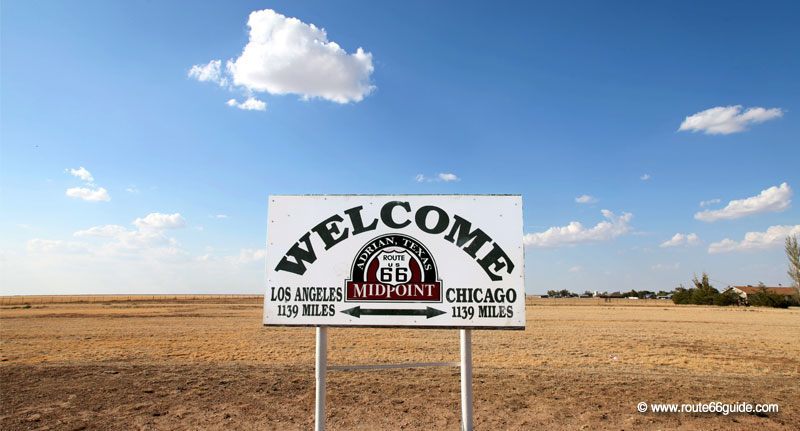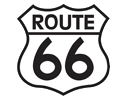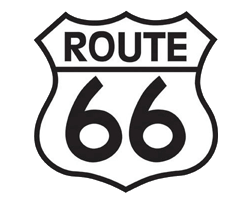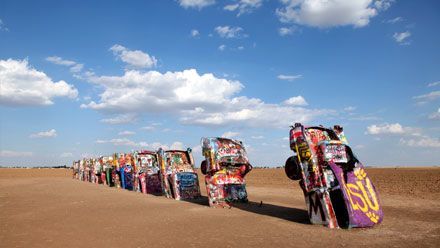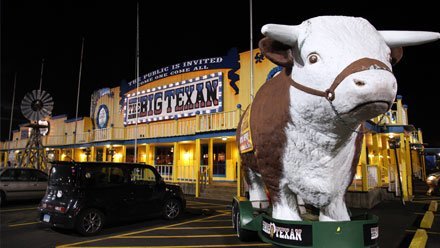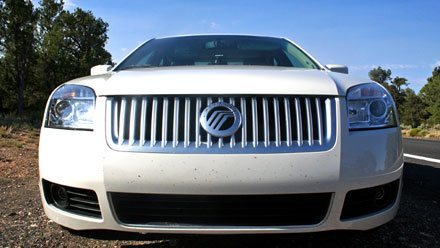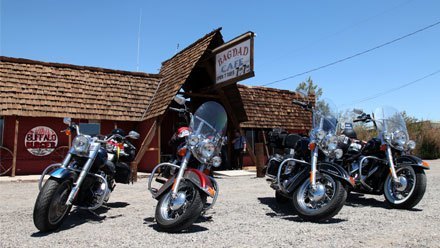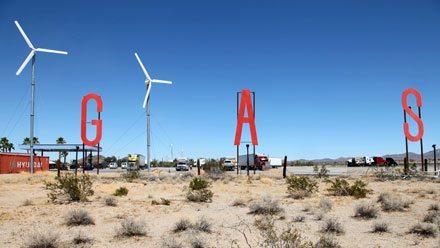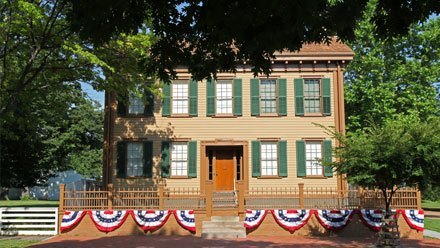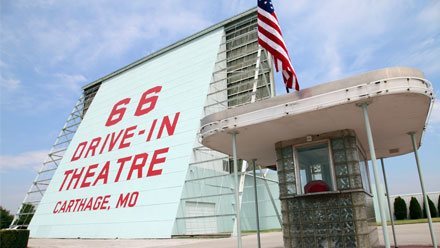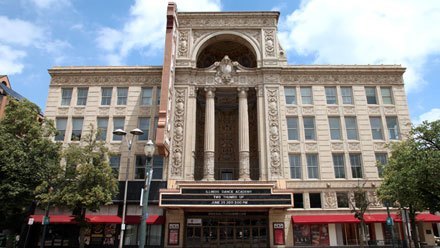Historic Route 66 in Texas

A country within a country, Texas is the largest mainland state (Contiguous United States) and the second largest in the U.S. behind Alaska. It was the only one to know a short period of sovereignty (1836 to 1845) and maintains a lively spirit of independence, stated in its slogan and banner: the "Lone Star State".
Here, people consider themselves first Texan and then American, and you will surely miss the ubiquitous American flag on the facades of houses ... replaced here by the "Texan flag!"
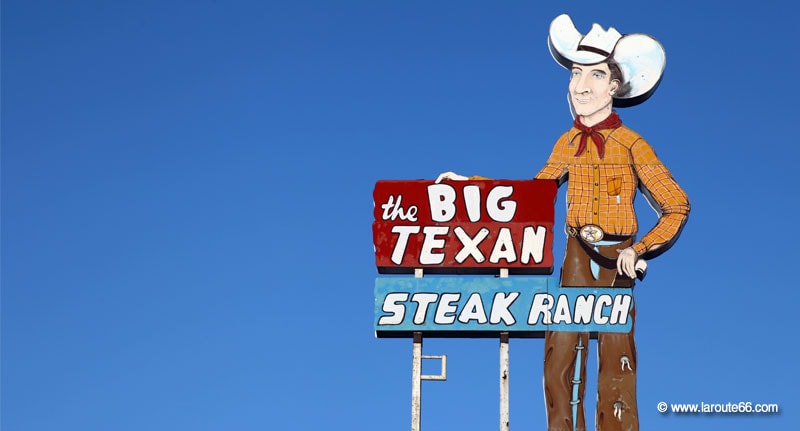
Conservative, proud, of deep-rooted republican spirit, Texas is the home of the Bush family, who gave two country Presidents. Bearer of the most important segment of the Texan population, rural, deeply religious and conservative, George W. Bush and his Stetson and cowboy boots, but also his ranch, outspokenness and simplicity make him an extremely popular figure around here. Extremely friendly, always willing to exchange a few words, the Texans are, however, generally touchy about certain political issues.
Route 66 in the Panhandle
The northern end of the state is known as the "Panhandle". Narrower than the rest of Texas, its border with Oklahoma and New Mexico are drawn to the rule. Route 66 crosses it from side to side, 190 miles, of which 150 miles are entirely passable.
No one can claim to have visited Texas by simply going through the "Panhandle" but it is nonetheless an excellent introduction.

Halfway through Route 66 in Texas we come to Amarillo, home to one of the two largest livestock markets in the country. Every weekday morning, real cowboys, wearing their Stetsons and cowboy boots - definitely not for love of folklore - rush at the doors of the "stockyards" to participate in the auction. Auctions are open to the public - go preferably on Tuesday, the busiest day of the week.
Amarillo is the only real town on Route 66 in Texas. An important stopover for travelers of Route 66 since its early days, it was a relatively small town before the opening of the first transcontinental route in the world. Today, however, it has partly lost its human dimension, with its endless succession of suburban areas arranged along the Interstate.
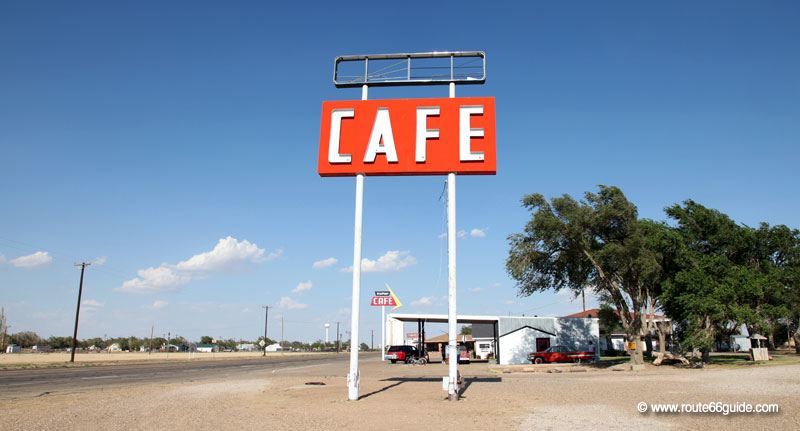
To the east and west of Amarillo, we only find dormant, near ghost-towns since the decommissioning of the 66. Many future ghost towns, and others that somehow resist, play the card of nostalgia for the historic route, hoping to encourage travelers to pay a visit.
Texas: main attractions along Route 66
The former U-Drop Inn service station in Shamrock was built in 1936 and remains one of the most beautiful buildings of the time along Route 66. It is recognized from afar by its two towers. In the movie "Cars", the U-Drop Inn houses Ramones garage.
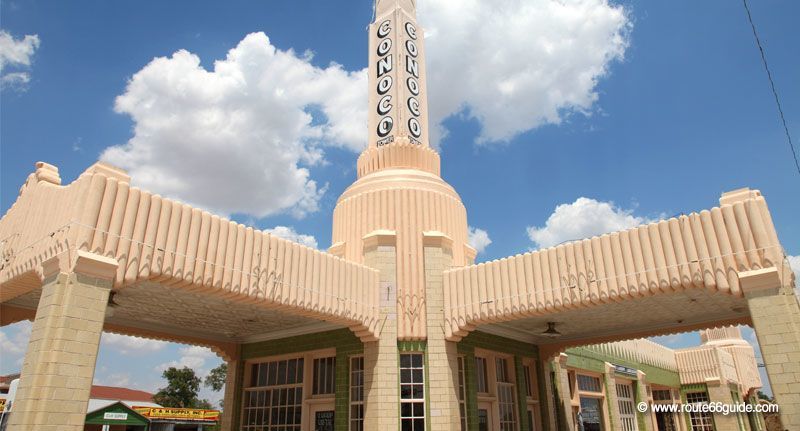
The Devil's Rope and Route 66 Museum in McLean share the same building. The first focuses on barbed wire, which played a key role in the expansion of cattle ranching in Texas. The second focuses on Route 66 and its major attractions in the state.
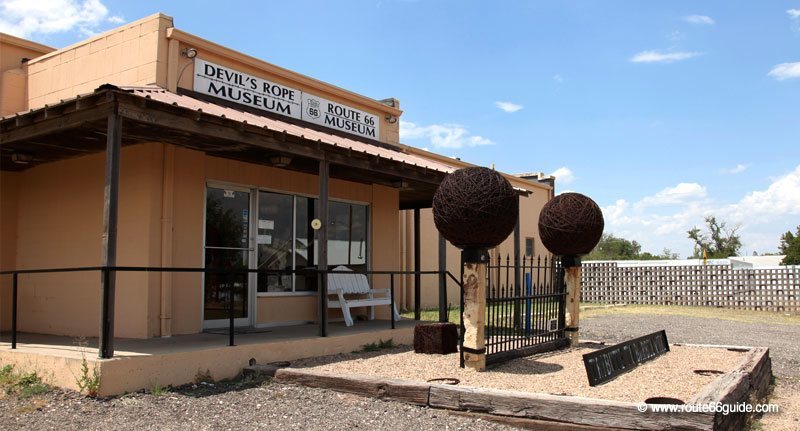
The Giant Cross (Giant Cross of Our Lord Jesus Christ) in Groom is visible for tens of miles around. With its 190 ft., it dominates the plains of eastern Texas, like a sparkling white mirage in the middle of nowhere. Around the building, a series of sculptures depict Christ's passion, while near the religious gift shop (!), The Messiah stands at the heart of a soothing fountain. There is no doubt about it, we are treading "Bible Belt" territory.
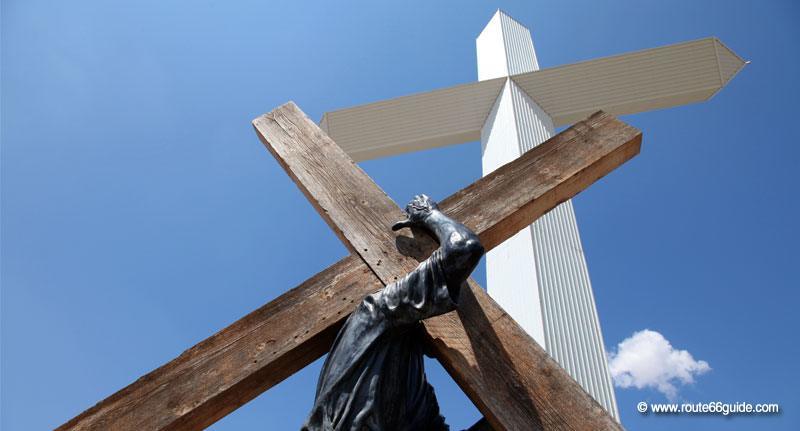
The Leaning Water Tower of Groom invariably catches the driver's eye. Nearing a less than probable collapse, it is actually - and only - intended to attract passing motorists. Fortunately for the locals, a second water tower, a functional one, stands closer to the city center.
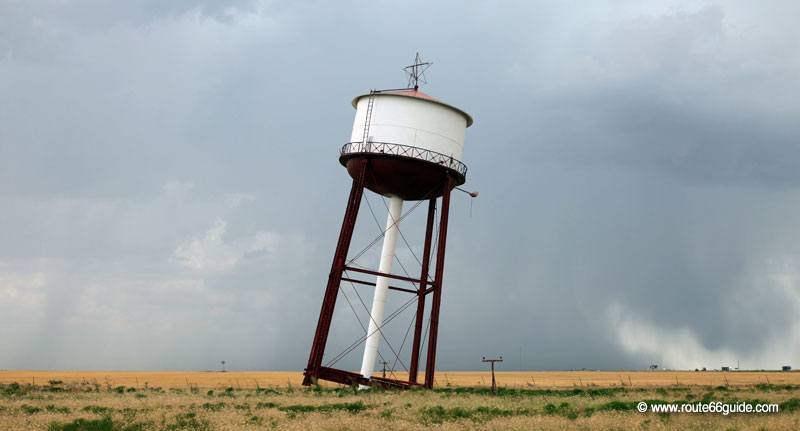
The Bug Ranch in Conway is an interpretation of the "Cadillac Ranch" in Amarillo, which we will encounter a few miles down Route 66. Here, old VW beetles were nose-driven into the ground and left with their doors open, as bugs crashing on the desert floor of this small community, dotted with numerous abandoned service stations.
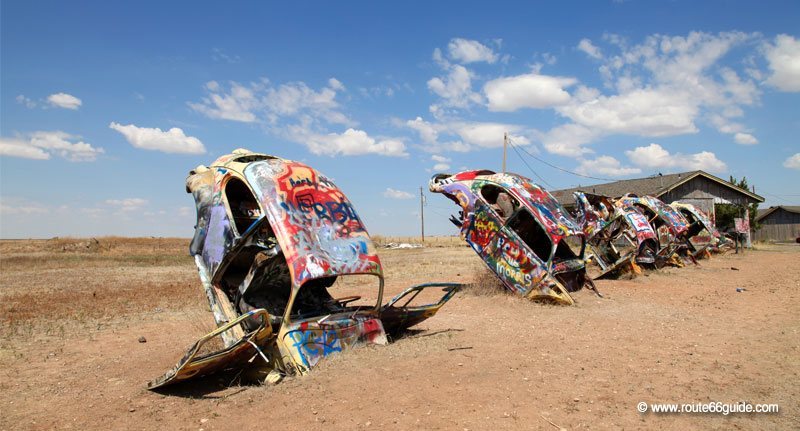
Downtown Amarillo, the main town in North Texas, hosts dozens of antique shops in a friendly cowboy atmosphere. Stanley Marsh 3, architect of the Cadillac Ranch, has scattered humorous signs all over.
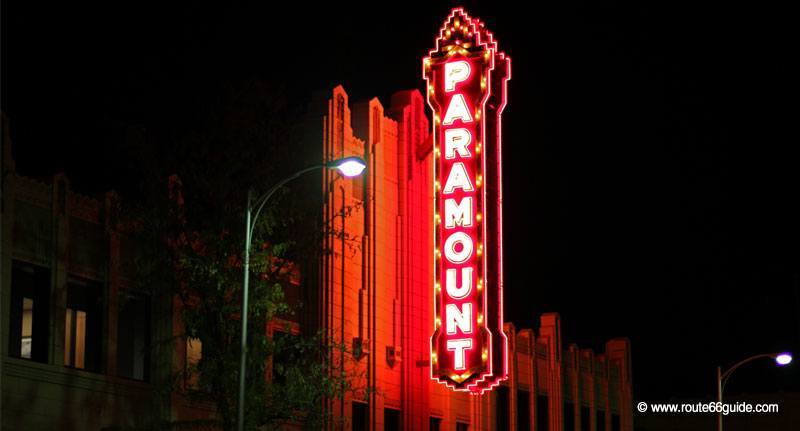
The Cadillac Ranch of Amarillo is undoubtedly the most famous work of art along Route 66. It was erected in 1974 by the group of artists commissioned by Stanley Marsh 3 and consists of ten Cadillac vehicles nose-driven into the ground in the same orientation as the pyramids of Egypt. In fact, this work was commissioned to present the evolution of the automobile brand between 1949 and 1963.
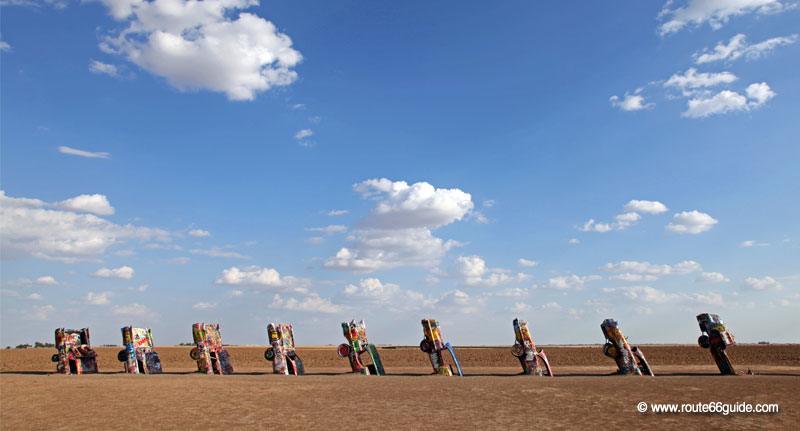
The Big Texan Ranch in Amarillo stood formerly near Route 66 and now sits close to Interstate I-40, where it was relocated after the transcontinental route was decommissioned. Its restaurant is hard to miss! Dozens of giant billboards announce the deal that made it famous for miles around: get a 72 oz. steak and accompaniments (!) for free if eaten in under an hour.
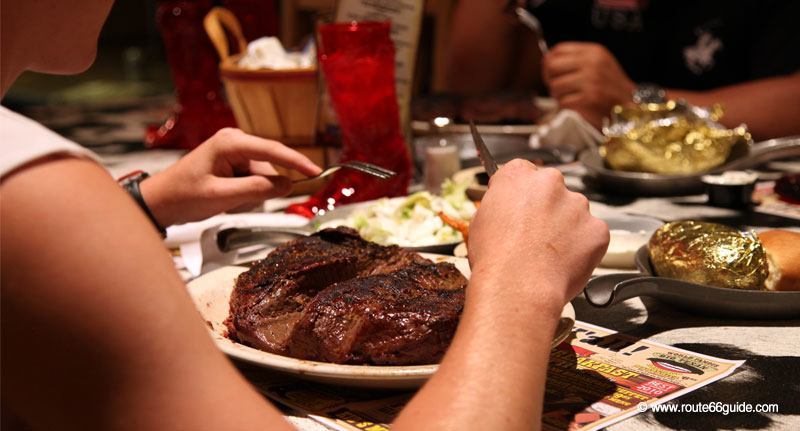
The Stockyards of Amarillo are among the two most important of its kind in the United States. Public auctions are held each weekday morning, Tuesday being the busiest day. Annually, more than 100,000 cattle heads are bought and sold here. Amarillo is the largest town on the Texan stretch of Route 66.
The Midpoint Cafe in Adrian is located right across a sign indicating the precise midpoint on Route 66, 1,139 miles to Los Angeles and Chicago. The Midpoint Cafe, author of the famous "Ugly Crust Pie", welcomes the visitor with a slogan celebrating its central position: "When you're here, you're halfway there".
